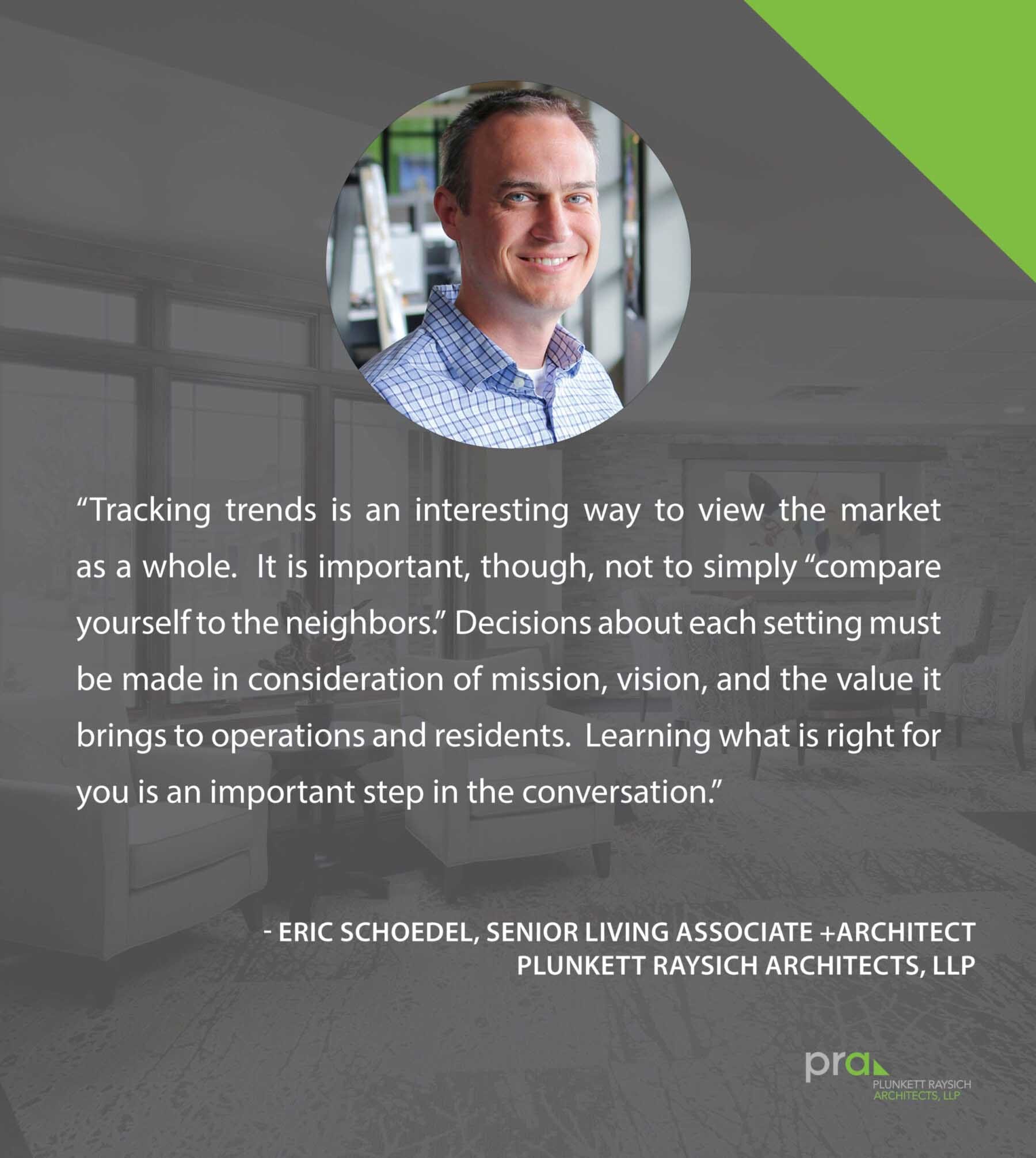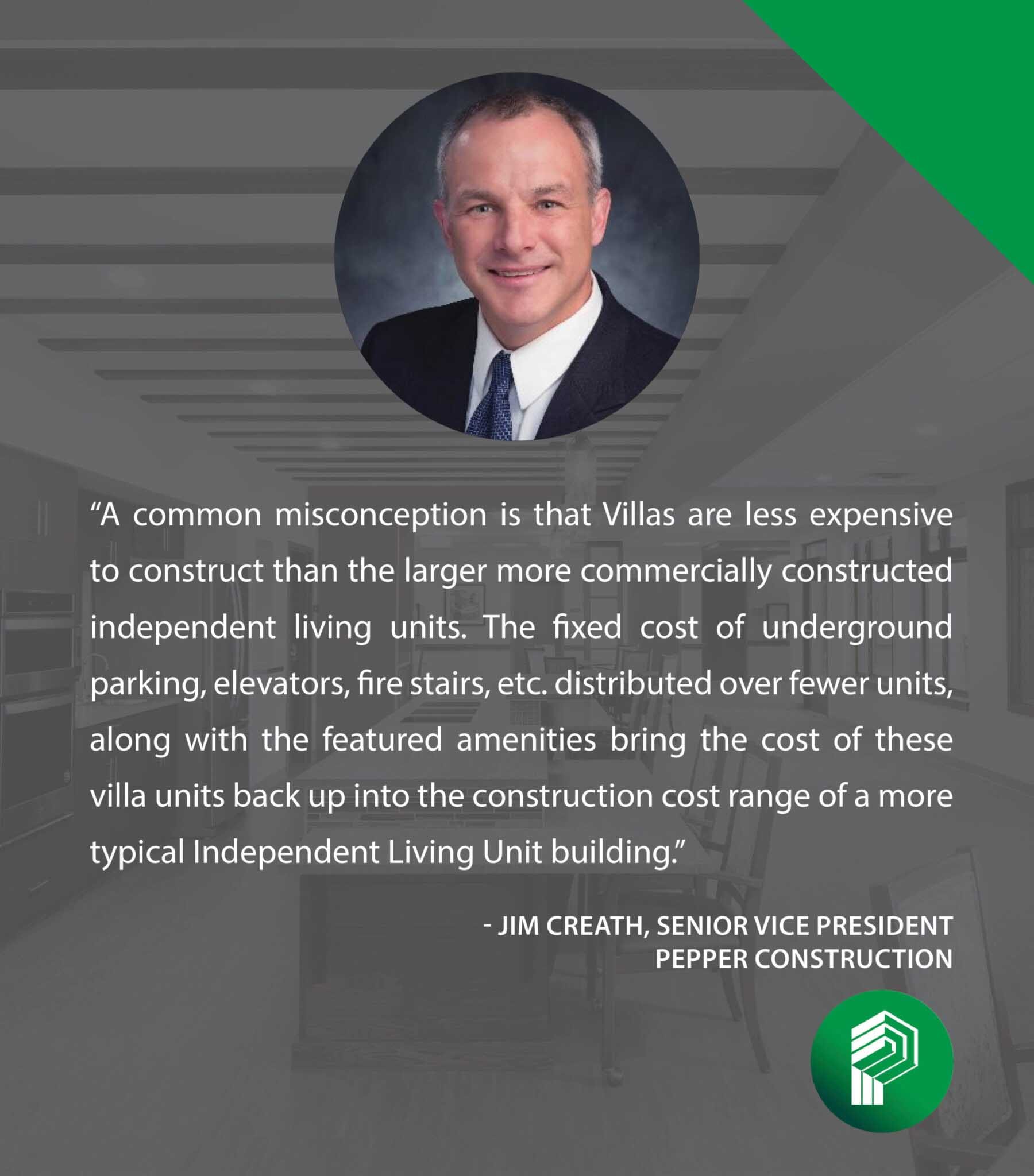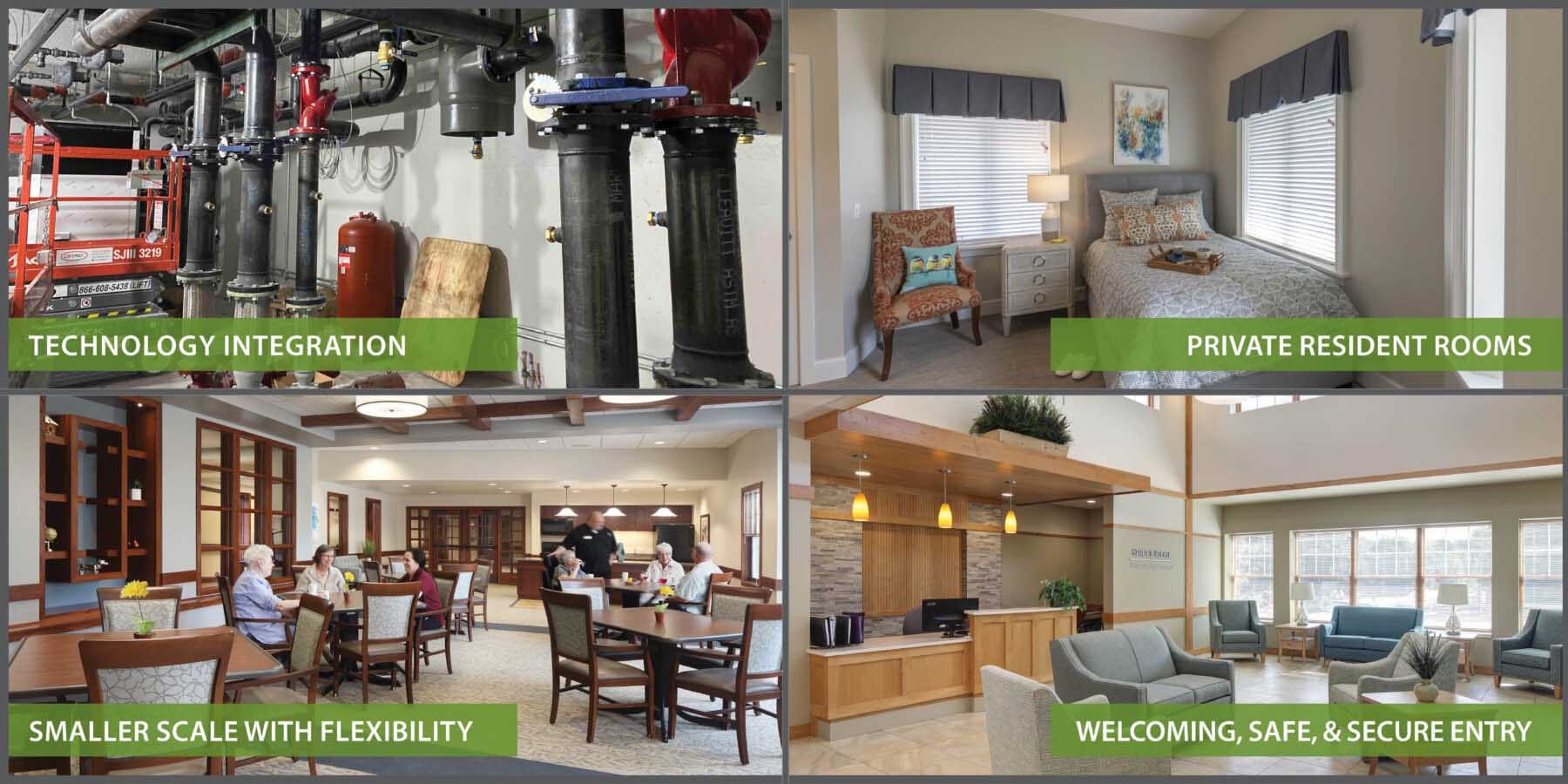The design of senior living environments continuously evolves. Several notable design trends have emerged in the prior decades, especially in nursing homes. For instance, the shift from the institutional model of the 1960s and 70’s to today’s more homelike resident-centered care model.
The COVID-19 pandemic has pushed some facilities to make changes quickly. The industry’s underlying concern should maintain focus on design trends with positive outcomes and avoid returning to less useful design ideas. The recent work done by a variety of these facilities has helped to validate some of these design trends as especially useful.
This blog post will review some of these trends as tracked by two industry veterans:
- Eric Schoedel, AIA, NCARB, Senior Associate, Plunkett Raysich Architects
- Jim Creath, Senior Vice President, Pepper Construction
Technology Integration
There were many technological advancements well before the COVID pandemic that benefit senior living environments. Such as advanced HVAC systems that can address air-borne viruses and other contaminants with either Bipolar Ionization, UV light, or increased filtration with higher HEPA ratings. Even more common are touchless technologies such as door operators, faucets, and light controls.
We’ve also seen many facilities upgrade their data systems to allow greater bandwidth and WIFI, especially important to support all of those Zoom family calls and telehealth appointments. Many of these enhancements are unique in providing increased convenience and also have an impact on limiting the transmission of germs and disease. We’ve been incorporating these technologies before COVID, and believe that they are good ‘value adds’ moving forward.
Private Resident Rooms
In nursing homes and assisted living settings, the shift has been away from shared resident rooms to more private rooms. Affordability has been a primary driver of central bathing, shared sleeping, and shared toilet areas. This efficiency comes at the expense of infection control. Whether adapting existing spaces or designing for new construction, independent sleeping bathing and toilet areas provide a private and quiet resident-life experience that enhances personal identity and dignity. This design also reduces exposure to transmittable infection.
Smaller Scale With Flexibility
Many organizations, such as the Society for the Advancements of Gerontological Environments (SAGE) and the Facility Guidelines Institute (FGI), have supported change toward smaller resident “Households.” Households divide the total population into multiple clusters of 10-15 residents, in private rooms, augmented with shared small-scale dining and activity venues. Oftentimes, additional multi-purpose spaces also provide options for even-smaller group dining and socialization. Resident-life benefits may include more socialization and bonding and an increased sense of place and belonging. Designing with multiple individual households helps to isolate the full population into smaller pods of residents, provide licensing flexibility, and ease management of transmissible diseases that can occur in venues that simultaneously serve 40+ residents at a time.
Households can also be developed as individual buildings. These are not the duplex cottages found on the perimeter of many successful Continuing Care Retirement Communities but are larger, amenity-filled buildings supporting between 4 and 12 independent living units. Such Villa’s provide the additional benefits of design flexibility to provide more corner units, more windows, and private balconies while also providing a further sense of place and ownership


Welcoming, Safe & Secure Entry
Large facilities may have dozens of entry points, whether for families, deliveries, or staff. Once the pandemic lockdown occurred, facilities shifted to a very limited number of entries with close monitoring and specific check-in/check-out procedures. We do not see this changing drastically in the future: Before the pandemic, many facilities were already concerned about the safety of their residents and were exploring options to provide a safe and secure campus. For instance, we frequently designed entry lobbies with friendly control points consisting of a strategically placed reception desk. We often worked with the facility to integrate other safeguards, such as CCCTV, check-in procedures, and nearby visitation rooms that provide a safe venue for external visitors that limited their penetration into the building. These ideas contribute to health and safety at many levels and have been topics of discussion during the pandemic.
There have been many more advancements in senior living design, and some may remain post-pandemic. We believe that the items discussed here will stand the test of time because they help focus on a quality living environment for our seniors.
Additional Readings
Future Trends in Long-Term Care: What Can You Do Now to Prepare?
Metrics in Long-Term Card – Balancing the Financial and Operational Impact of your Facility
Society For The Advancement of Gerontological Environments
Creating Welcoming and Safe Entrances
ASHRAE Filtration/Disinfection
Reopening America: Strategies for Safer Senior Living Communities
Authors
ERIC SCHOEDEL, LEED® AP BD+C
Eric started at PRA in 2001 and resides in the Senior Living Studio as a Project Manager and Senior Associate. His responsibilities vary between projects, but his specialty is assisting the Owner and Operators in the Senior Living industry in designing efficient, state of the art facilities that provide a better quality of life for residents, visitors, and staff.
Jim leads construction teams in the Senior Living, Higher Education and Institutional Markets at Pepper Construction. Currently he is Senior Vice President at Pepper’s Barrington, IL office, where provides team leadership, develops strong teams, and fosters long lasting client relationships.
